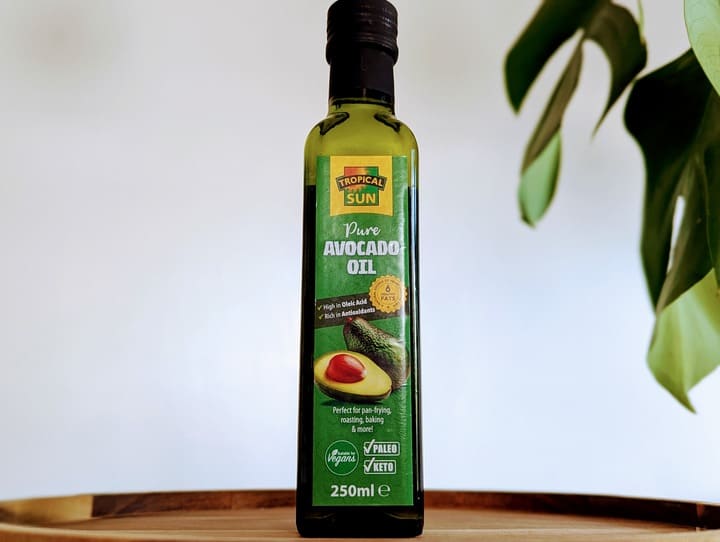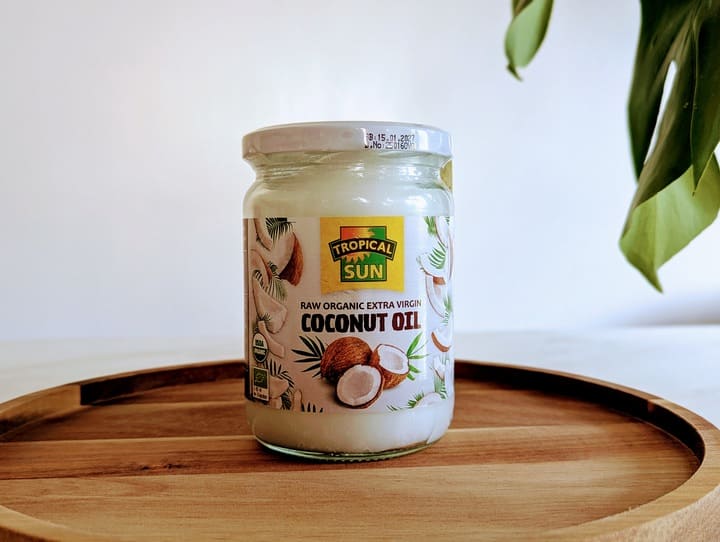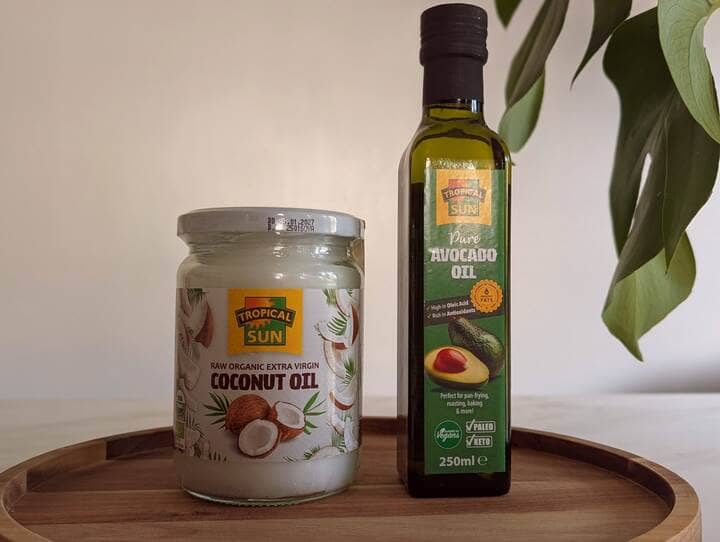Walk down any supermarket aisle and you’ll see shelves full of oils. Olive, avocado, sunflower, coconut, rapeseed, and a dozen other types. Each has its merits, each comes with health claims, and each is suited to certain recipes or uses. My dad makes an amazing curry with a sesame oil, while I also know he pours walnut oil onto salads.
No single oil is right for everything, so the trick is knowing when to reach for which bottle. This guide will cut through all the marketing jargon, explain what matters most for you, and highlight a couple of great options worth adding to your kitchen shelf.
 Understanding the basics
Understanding the basics
At their simplest, oils are fats extracted from plants, nuts, seeds or animals. When cooking in the kitchen, most of us opt for plant oils. The way an oil is extracted affects both flavour and nutrition. Cold pressed oils, for example, retain more antioxidants and natural taste, while refined oils are more neutral but often better for high heat cooking. Honestly, refined oils get a hard knock, but they do have their place for high heat cooking.
A key concept to understand is the smoke point. This is the temperature at which an oil starts to burn, producing smoke and breaking down into compounds that are both bitter in taste and less healthy for your body.
For stir frying (which I do daily) or roasting at high temperatures, you want an oil with a high smoke point. For drizzling over a salad, a cold pressed oil with a punchy flavour is perfect.
Popular oils and how to use them
Olive oil is a kitchen staple, especially the extra virgin variety. It’s rich in monounsaturated fats and antioxidants, making it one of the healthier everyday choices. It has a medium smoke point, so it’s best suited to dressings, dipping, or gentle frying. Word of warning, if the extra virgin olive oil is cheap, it’s most likely mixed and might not be as good as you think or it claims to be.
Avocado oil is increasingly popular thanks to its high smoke point and neutral taste. It can handle frying, roasting and baking, while still being full of healthy fats.
Coconut oil divides opinion. It is high in saturated fat, but it also has unique medium-chain fatty acids (MCT’s, gym goers often know about this) that the body metabolises differently. It brings a distinct flavour, making it ideal in curries or baking where you want that hint of coconut. I often use it in a Thai curry.
Rapeseed oil (sometimes called canola) has a mild taste, a good balance of fats, and a relatively high smoke point. It’s a decent all-rounder and often more affordable than olive or avocado oil (but can be more pricey if opting for cold pressed).
Sunflower oil is another neutral option, commonly used in frying. It has a high smoke point but is higher in omega-6, which most of us already get plenty of in our diets. I tend to avoid this one.
Nut oils such as walnut, sesame or almond bring depth of flavour but are usually better reserved for finishing a dish or adding to dressings, as their smoke points tend to be lower. See these not as a cooking oil, but as a drizzling oil.
Health considerations
When comparing oils, the health angle usually comes down to the types of fat they contain.
– Monounsaturated fats are widely considered beneficial for heart health, found in abundance in olive and avocado oils.
– Polyunsaturated fats include both omega-3 and omega-6. Omega-3s are anti-inflammatory, while too much omega-6 without balance isn’t great.
– Saturated fats are often portrayed as the unhealthy ingredient, but context matters. Coconut oil, for example, is mostly saturated, yet has been part of traditional diets in some cultures for centuries. Moderation is certainly key.
Another factor you should consider is antioxidants, which help to fight free radicals. Cold pressed extra virgin oils tend to be richer in these compounds, which play a role in reducing oxidative stress in the body.
And then there’s the smoke point. Cooking an oil beyond its smoke point is not just bad for flavour, it also releases harmful compounds. Choosing the right oil for the right cooking method is one of the simplest ways to make your diet healthier.
If you’re having a low heat stir fry of healthy vegetables, then an avocado oil is a great option, something I cook every day for lunch. I used to have extra virgin olive oil, thinking I was choosing the right and healthy option, but the low smoke point was an issue.
Oils beyond the kitchen
Not all oils are destined for the frying pan. Many of the same natural oils we cook with are also brilliant for skincare and hair care. Coconut oil is a long-time favourite for moisturising skin, taming frizz, or acting as a gentle makeup remover. Raquel often utilises coconut oil for her hair.
Olive and avocado oils can also be used on the skin, especially when blended into creams or hair masks. Massage oils are often based on lightweight plant oils too.
Tropical Sun Avocado Oil
 If you want one oil that can handle almost anything you throw at it, avocado oil is a safe bet. Tropical Sun’s Pure Avocado Oil comes in a 250ml bottle and is packed with antioxidants and oleic acid, a heart-healthy monounsaturated fat.
If you want one oil that can handle almost anything you throw at it, avocado oil is a safe bet. Tropical Sun’s Pure Avocado Oil comes in a 250ml bottle and is packed with antioxidants and oleic acid, a heart-healthy monounsaturated fat.
It has a high smoke point, which means you can use it for frying, roasting and even baking without worrying about it burning or spoiling the flavour.
What sets avocado oil apart is its balance. It doesn’t overpower dishes the way coconut or sesame oil can, but it still has enough character to use in salad dressings or dips. Whether you are searing salmon (my go-to as I love salmon), roasting vegetables, or just want a drizzle over sourdough, this oil works perfectly. At £6.99, it’s an easy way to bring both versatility and nutrition into your cooking. It offers the healthy option without breaking the bank.
Tropical Sun Raw Organic Coconut Oil
 Coconut oil is one of the most versatile ingredients you can keep in your cupboard. Tropical Sun’s Raw Organic Coconut Oil is extra virgin, cold pressed and made from organic coconuts. It brings that unmistakeable tropical flavour to stir fries, curries, scrambled eggs or even smoothies. In baking, it can be used as a plant-based alternative to butter, adding a subtle sweetness, but I’ve not given this a try before.
Coconut oil is one of the most versatile ingredients you can keep in your cupboard. Tropical Sun’s Raw Organic Coconut Oil is extra virgin, cold pressed and made from organic coconuts. It brings that unmistakeable tropical flavour to stir fries, curries, scrambled eggs or even smoothies. In baking, it can be used as a plant-based alternative to butter, adding a subtle sweetness, but I’ve not given this a try before.
Beyond the kitchen, you could even try this oil to create a shine as a natural beauty product. You can use it to moisturise skin and lips, condition hair, or even for oil pulling if that’s part of your routine. Warm it slightly and it makes an excellent massage oil too. But for me, I’m all about the cooking and this one is ideal for curries galore.
At £9.99 for a 480ml jar, it goes a long way, especially when you’re using it for both cooking and self-care.
Tips for choosing the right oil
– For frying and roasting: pick avocado or rapeseed oil for their high smoke points.
– For salads and drizzling: extra virgin olive oil or nut oils give the best flavour.
– For baking: coconut oil can be a good butter replacement, while neutral oils like sunflower keep flavours clean.
– For skincare: coconut, avocado or almond oil are all natural options.
When buying an oil, look for cold pressed and organic where possible. Dark glass bottles help protect the oil from light, keeping it fresher for longer, so don’t choose an oil in a light bottle, which is oddly common in the UK. You should store the oil in a cool, dark place and use them within a few months of opening.

